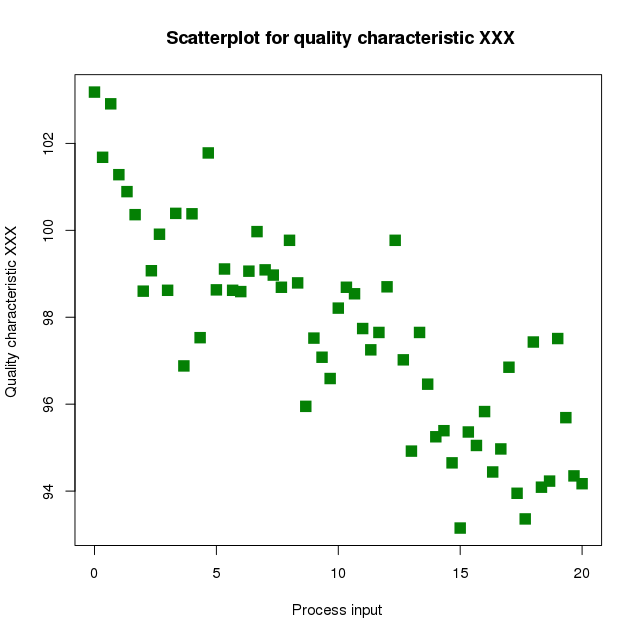Scatter plot: Difference between revisions - Wikipedia
 Article Images
Article Images
Content deleted Content added
Line 16: A scatter plot can be used either when one continuous variable is under the control of the experimenter and the other depends on it or when both continuous variables are independent. If a [[parameter]] exists that is systematically incremented and/or decremented by the other, it is called the ''control parameter'' or [[independent variable]] and is customarily plotted along the horizontal axis. The measured or [[dependent variable]] is customarily plotted along the vertical axis. If no dependent variable exists, either type of variable can be plotted on either axis and a scatter plot will illustrate only the degree of [[correlation]] (not [[causality|causation]]) between two variables. A scatter plot can suggest various kinds of correlations between variables with a certain [[confidence interval]]. For example, weight and height would be on the {{mvar|y}}-axis, and height would be on the {{mvar|x}}-axis. Correlations may be positive (rising), negative (falling), or null (uncorrelated). If the dots' pattern slopes from lower left to upper right, it indicates a positive [[correlation]] between the variables being studied. If the pattern of dots slopes from upper left to lower right, it indicates a negative correlation. A line of [[Curve fitting|best fit]] (alternatively called 'trendline') can be drawn to study the relationship between the variables. An equation for the correlation between the variables can be determined by established best-fit procedures. For a linear correlation, the best-fit procedure is known as [[linear regression]] and is guaranteed to generate a correct solution in a finite time. No universal best-fit procedure is guaranteed to generate a correct solution for arbitrary relationships. A scatter plot is also very useful when we wish to see how two comparable data sets agree to show nonlinear relationships between variables. The ability to do this can be enhanced by adding a smooth line such as [[Local regression|LOESS]].<ref>{{cite book | last = Cleveland | first = William | title = Visualizing data | publisher = At & T Bell Laboratories Published by Hobart Press | location = Murray Hill, N.J. Summit, N.J | year = 1993 | isbn = 978-0963488404 | url-access = registration | url = https://archive.org/details/visualizingdata00will }}</ref> Furthermore, if the data are represented by a mixture model of simple relationships, these relationships will be visually evident as superimposed patterns. The scatter diagram is one of the [[Seven Basic Tools of Quality|seven basic tools]] of [[quality control]].<ref>{{cite web | url = http://www.asq.org/learn-about-quality/seven-basic-quality-tools/overview/overview.html | author = Nancy R. Tague | title = Seven Basic Quality Tools | year = 2004 | work = The Quality Toolbox | publisher = [[American Society for Quality]] | location = [[Milwaukee, Wisconsin]] | page = 15 | access-date = 2010-02-05}}</ref> | |||